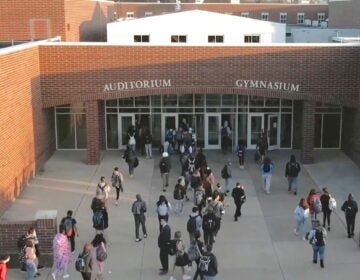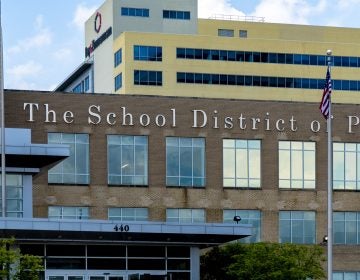More than a month in, Delaware students say mandated masks are worth the inconvenience
Class is in session at Odessa High in Delaware, where schools are fully open after the previous two years were disrupted by the pandemic.
Listen 5:19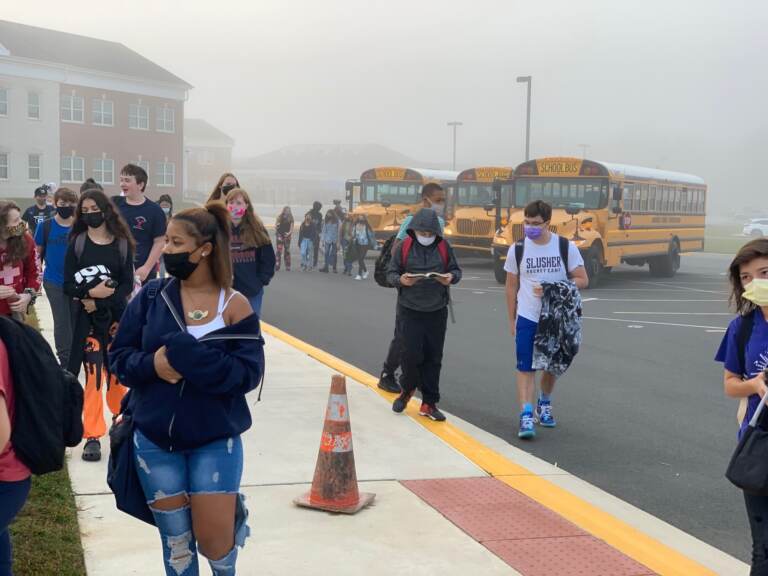
Students pile into Odessa High on a recent morning. (Appoquinimink School District)
Principal Voni Perrine moves with the mass of students marching or meandering down the hall during a class change at Odessa High School near Middletown.
“Let’s go, please. One minute!’’ she exhorts. “Come on guys. Let’s go. Pick her up.”
Beyond her insistent yet pleasant commands, Perrine also connects with the kids she passes.
“Good morning, good morning,’’ she calls to a group, leading one girl to respond: “How are you?”
Perrine also observes that one student is celebrating her special day.
“Oh, we have a birthday,’’ she exclaims.
Then the school’s chief hall cop returns to business until the bell sounds: “Let’s go guys.”
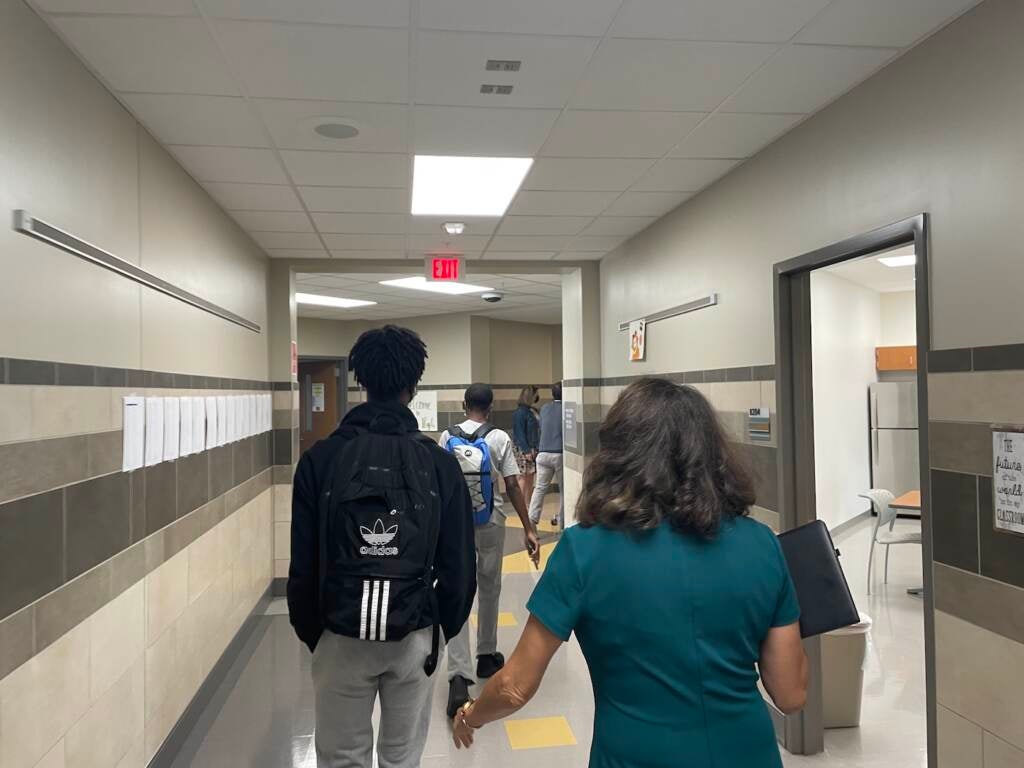
The scene that played out last week at Odessa High is being replicated all over Delaware, where K-12 schools are fully open to in-class learning for the first time since the coronavirus pandemic struck in March 2020.
The 2019-20 academic year ended abruptly when Gov. John Carney shuttered school doors statewide in late March. Last year schools could only have hybrid learning — a mix of virtual and in-class sessions — or remote only.
But since September all schools have been open to all students. Although a small percentage are opting to learn from home, kids are packing classrooms, hallways, and cafeterias again.
The only caveat, per Carney’s last-summer order as coronavirus cases were still spiking, is that everybody must wear masks and teachers and other building staff need to be vaccinated or undergo regular testing. Statewide, cases and hospitalizations are still high — 357 new cases a day for the last week, with 189 patients hospitalized — but have fallen in the last two weeks.
Yoga exercises kick off 90-minute English class
At Odessa High, which opened last year as the third high school in the rapidly growing Appoquinimink School District, there are 600 students in grades 9 and 10. Next year there will be 11th graders and the next all four grades.
Perrine took a WHYY reporter into a ninth-grade English class with two teachers for the 22 in-person students and a few holdouts on Zoom. It’s a 90-minute class and it starts with, of all things, yoga exercises.
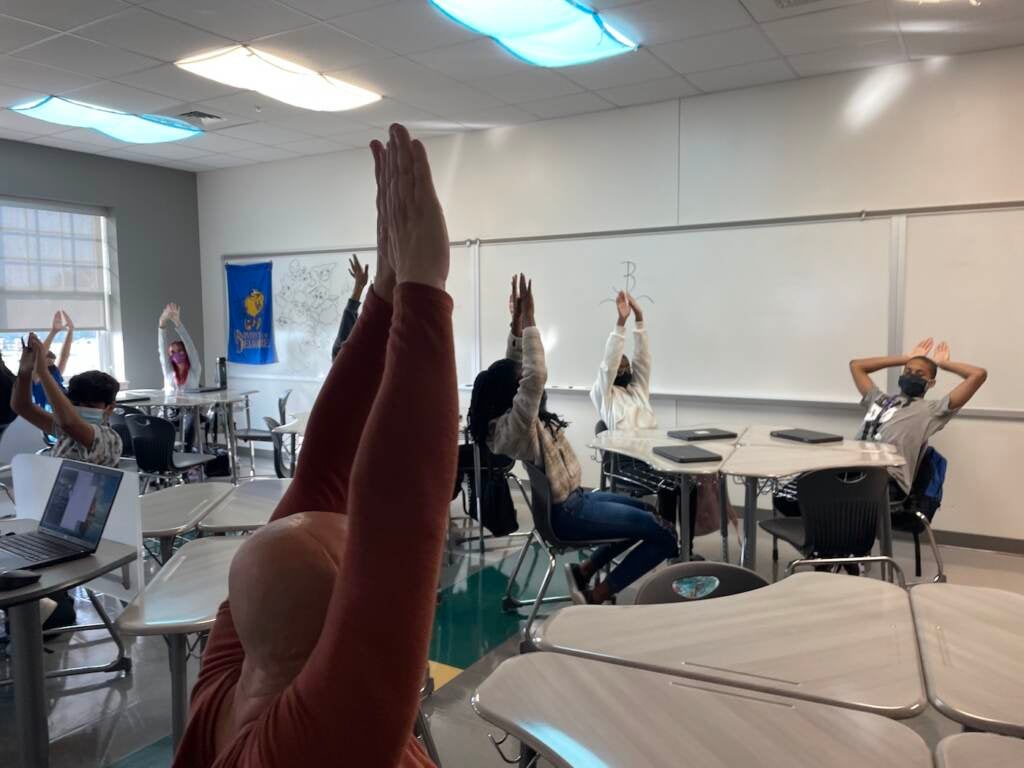
Instructor Tony DeVary, who is also a wrestling coach, has them stretch and hold.
“While we’re doing this,’’ he says, “you’re deep breathing through your nose. Out through your mouth, 20-second intervals on your own. This is supposed to be relaxing. It should never hurt, so at any point in time, if you’re struggling breathing, just breathe regularly, it’s OK.”
Teaching partner Kristin Bain weighs in.
“You guys are doing great. Don’t hurt yourself. Just feel the stretch,’’ she says.
After five minutes of stress relief and mind-clearing, Bain pivots to the lesson.
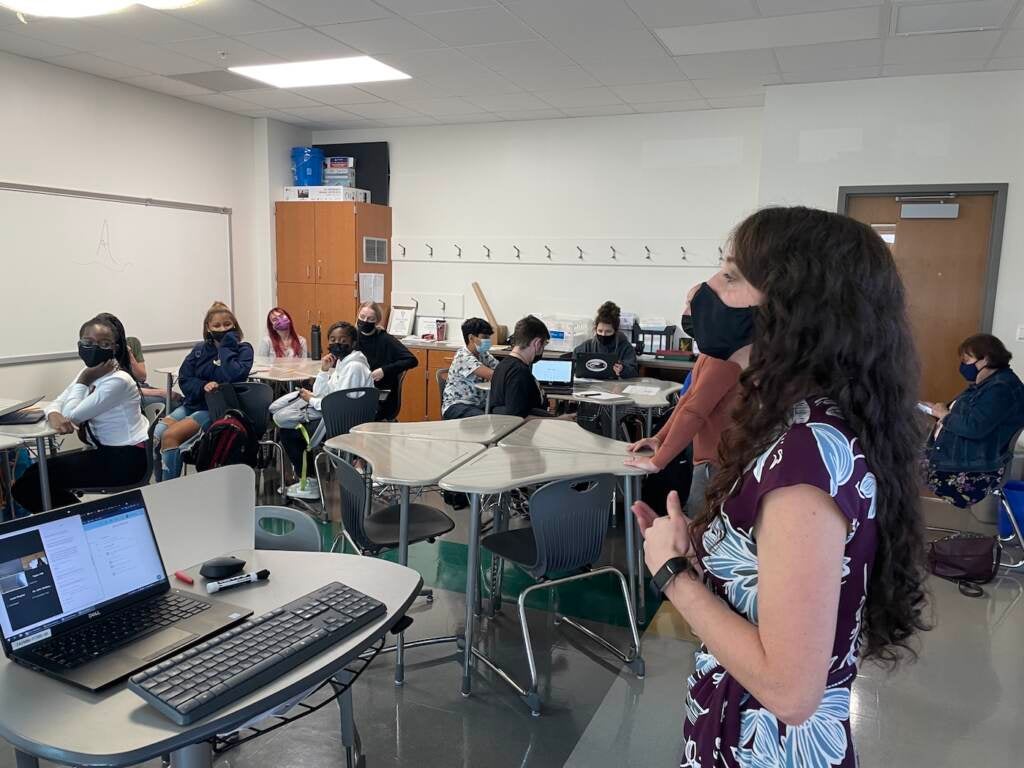
“Our learning intention today is learning how to incorporate evidence into a formal written response,’’ she instructs. “Before you leave you’ll be able to say ‘I can provide context for the textual evidence.’ You’ll be able to say, ‘I can explain how my evidence supports my claim.’”
The multifaceted class involves movies they have seen and nursery rhymes and the ancient Greek author Homer’s epic poem The Odyssey. Oh, and the human failing of hubris.
It’s far too complicated to explain here but it’s clear that Bain and DeVary have the kids focused on their mission.
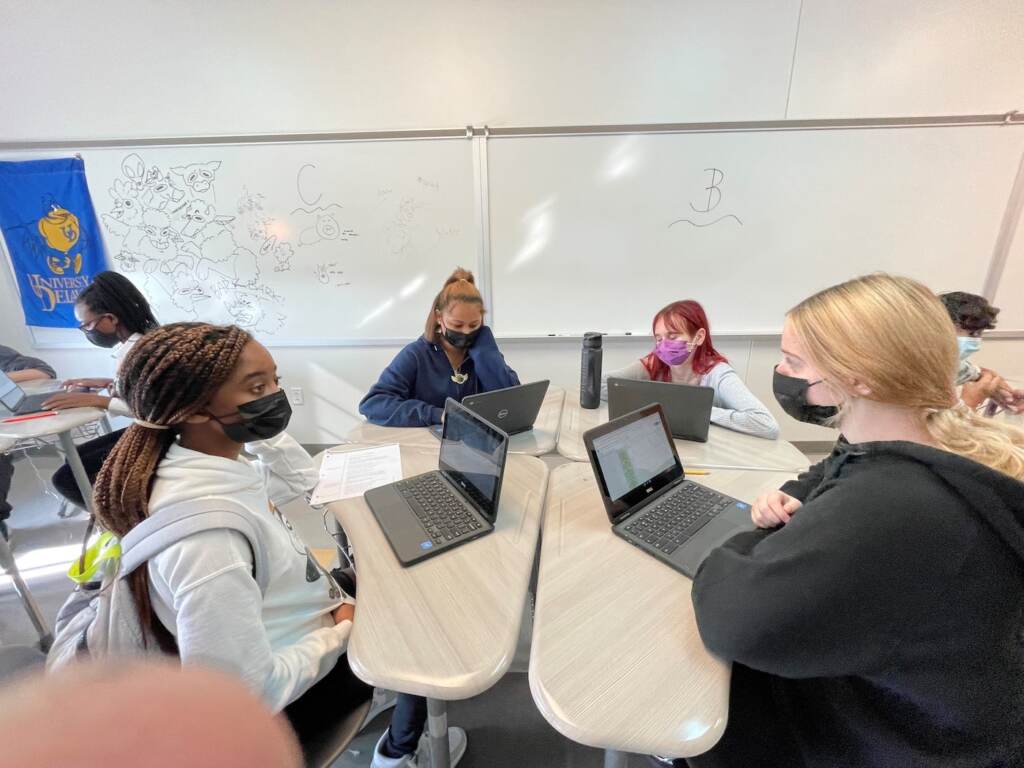
Masks ‘annoying’ but classes are ‘easier in person’
Four girls who sit together in a pod obediently wear their masks while they work on the lesson, though a couple of them struggle to keep it over their noses.
“I don’t like it,’’ one blurts out.
Says another: “It’s really tiring, because when you have gym and you don’t have a replacement one, it gets all sweaty and you have to deal with it all day.”
A deskmate chimes in: “I think it’s annoying because it’s harder to hear people.”
The fourth elicits a chuckle from the table when she points out that “sometimes the masks get these little hairs on the inside and it be tickling your nose.”
Nevertheless, they’re happy to be at school — together — instead of home.
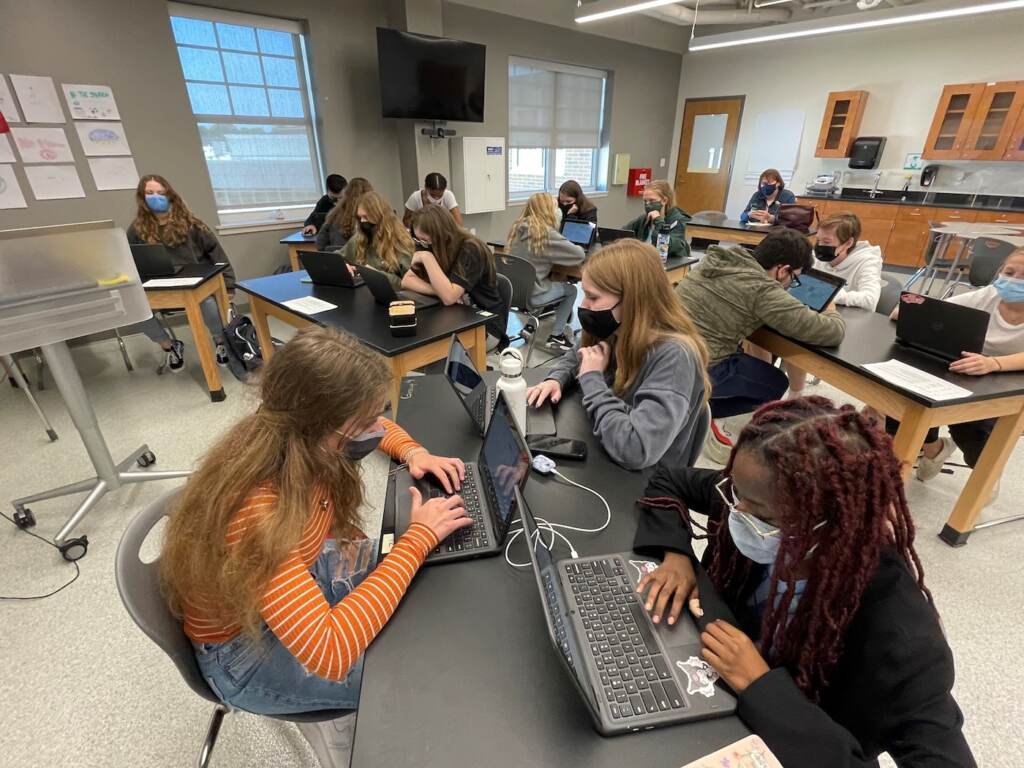
One girl says that when she learns from home, “I don’t really understand anything but when I’m in class I can actually get some help.”
Another says “it’s easier in person because you’re able to actually interact with people.”
A third is more blunt, saying that at home she found herself “sleeping in my classes because there’s no teacher to tell me to do my work.”
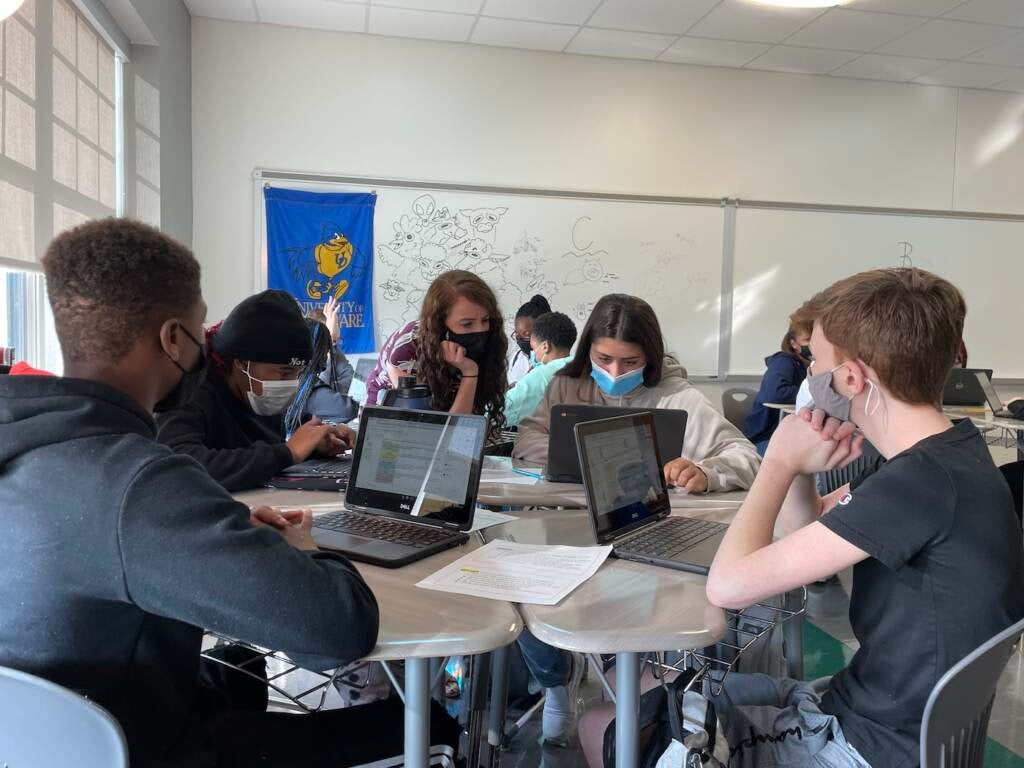
Students ‘need far more opportunities for grace’
After class ends, Bain says it’s working out better this year, and points out that the yoga at the outset of her class is helping students adjust to this year’s routine.
“Everyone has a new normal right now,” Bain says. “And I think that the greatest change is what the students need this year. They need far more opportunities for grace. We’ve always taught with compassion and you teach the person before you teach the content. But there’s a far greater need now.”
Science teacher Nikita Williams takes a break from a lecture on climate change to give her take.
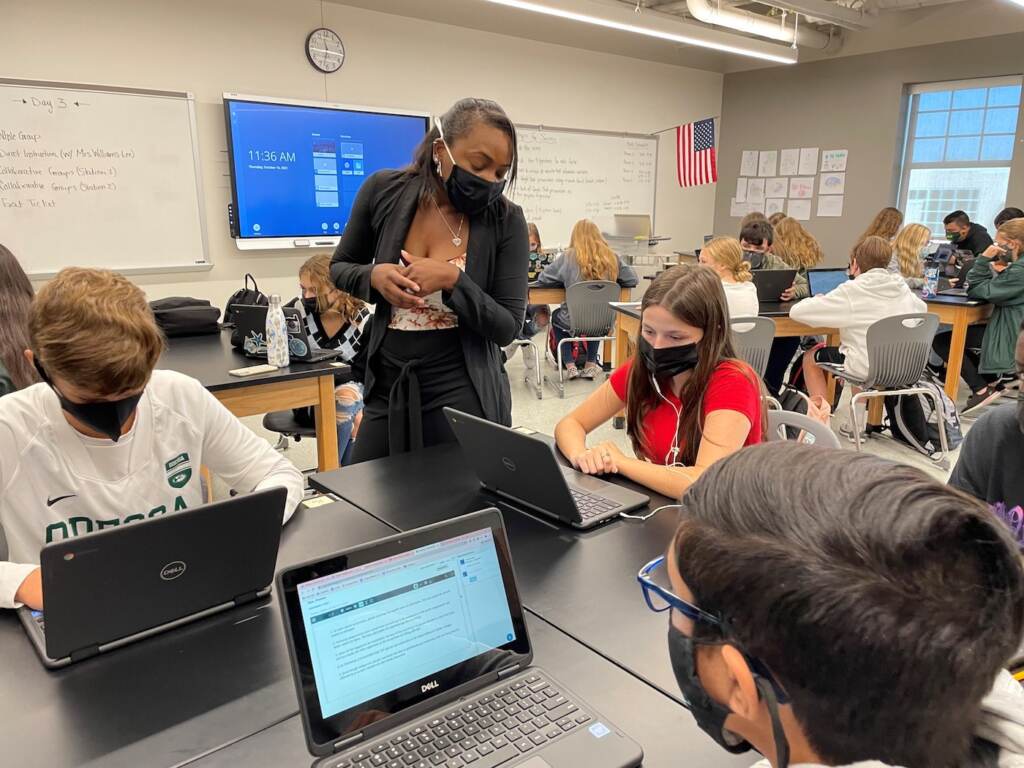
“It’s a little different because you still have kids who are virtual, but it’s not as many,’’ Williams said. “You don’t want to lose them because the majority is here so you’ve got to balance that. But other than that, having all the kids back is amazing because they really work.”
Ninth grader Tony Nyasagare echoes his classmates with his sentiment that being back in school is well worth the inconvenience of a face covering.
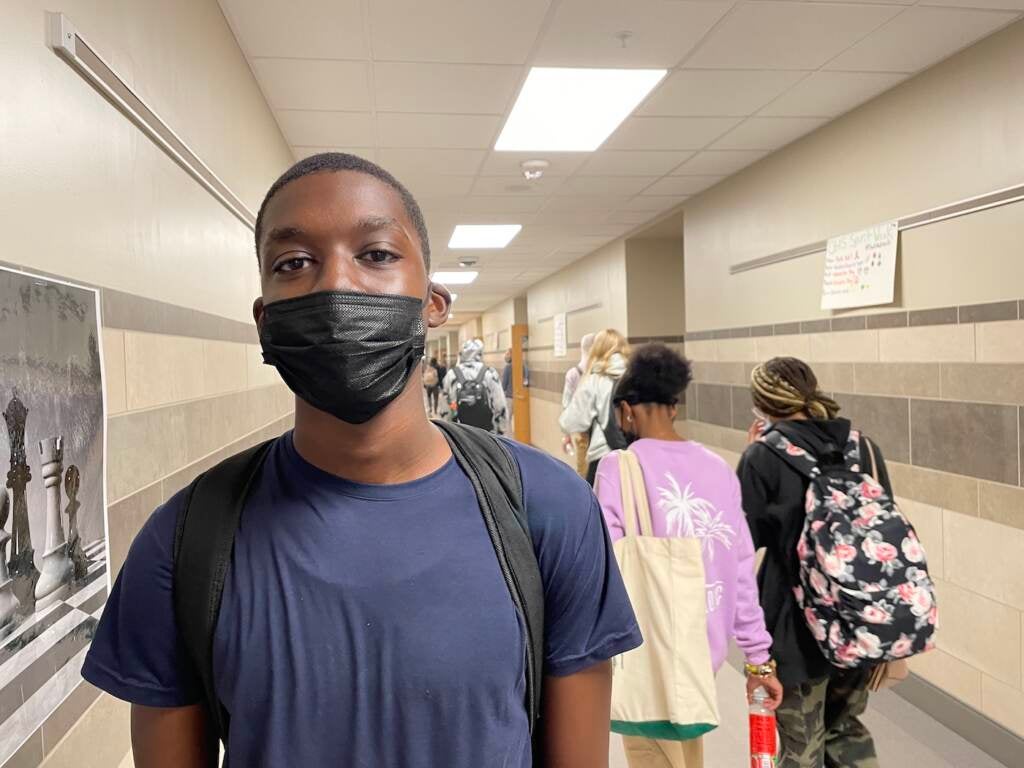
“It’s kind of tough to wear a mask the whole day, but you have to force yourself because you have to think about your family back home and keeping other people safe,’’ he said. “It’s also exciting to be back with other students and seeing my friends and teachers.”
Perrine says only about 10 of the 650 students and staff have tested positive for coronavirus. She says classes have not been affected.
“When staff have to quarantine and they’re not in school, they are at home teaching virtually,’’ she said. “They’re Zooming in with their kids, so instruction’s not lost.”
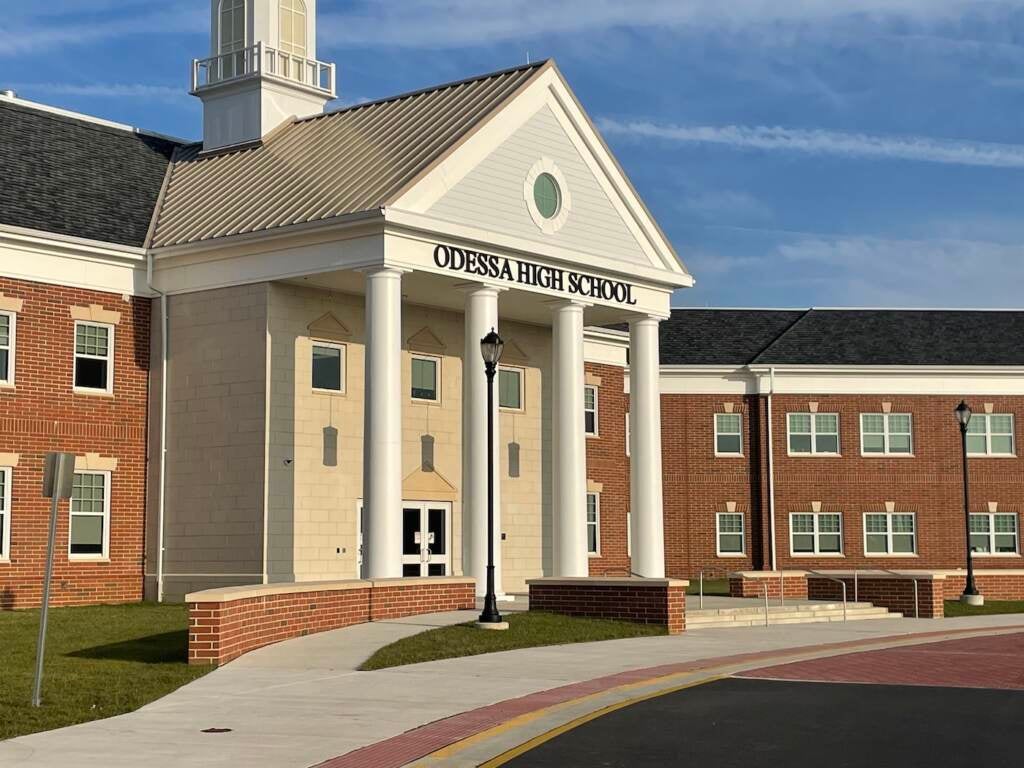
Statewide, cases have been steady but not enough to disrupt learning. To date, about 1,700 of the state’s 138,500 public school students — half of one percent — have tested positive. Another 300 staffers have been infected.
But Perrine says it’s all good, considering the alternatives and the previous two academic years.
“Kids and teachers are excited to be here. Participation is up,’’ she said, noting that Odessa High is having its first dance as well as a celebration weekend in lieu of homecoming at the new school with no graduates.
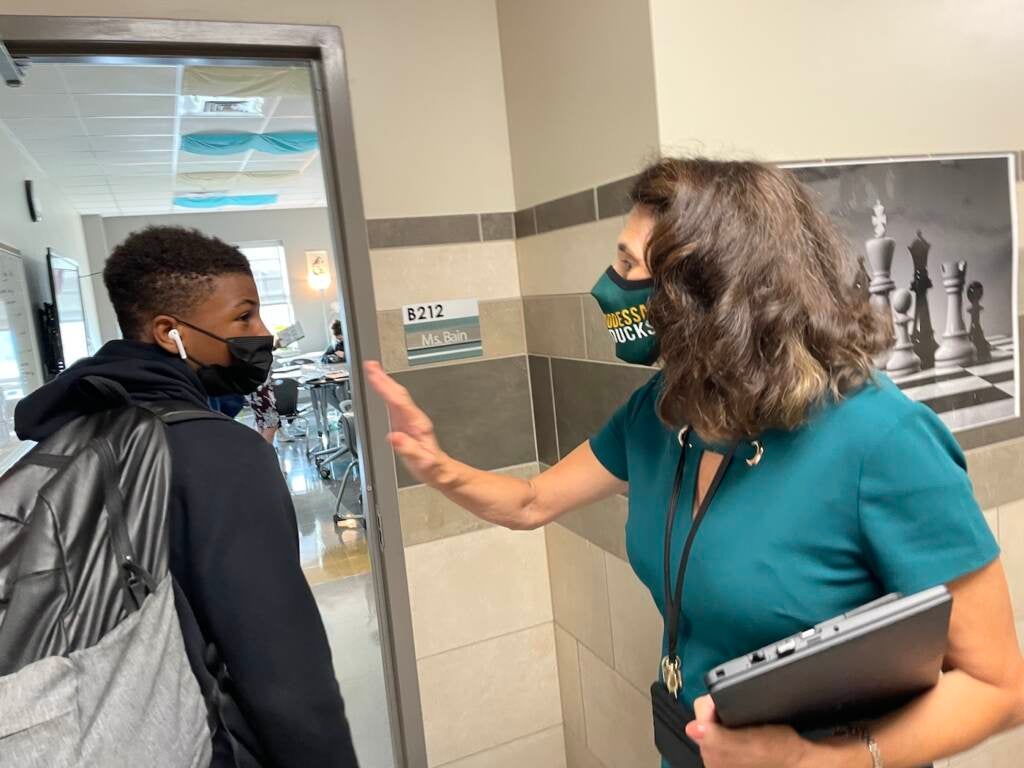
“We’re having a parade, we’re having a pep rally. We have our big football game and our Ducks are doing pretty well. We have a marching band now. We’ve hosted a competition. It’s just exciting.”
Perrine says masking is a small price to pay, and she doesn’t mind reminding and reminding and reminding students to keep them on, and wear them properly should the covering dip below their nose.
“The kids probably get a little tired of hearing it,” she said, “but they comply because again, I go to them and say, ‘I want you to be able to still play football. I want you to be able to come to school. So even if you don’t like it, we understand, but please put it up.’”

Get daily updates from WHYY News!
WHYY is your source for fact-based, in-depth journalism and information. As a nonprofit organization, we rely on financial support from readers like you. Please give today.





![CoronavirusPandemic_1024x512[1]](https://whyy.org/wp-content/uploads/2020/03/CoronavirusPandemic_1024x5121-300x150.jpg)
